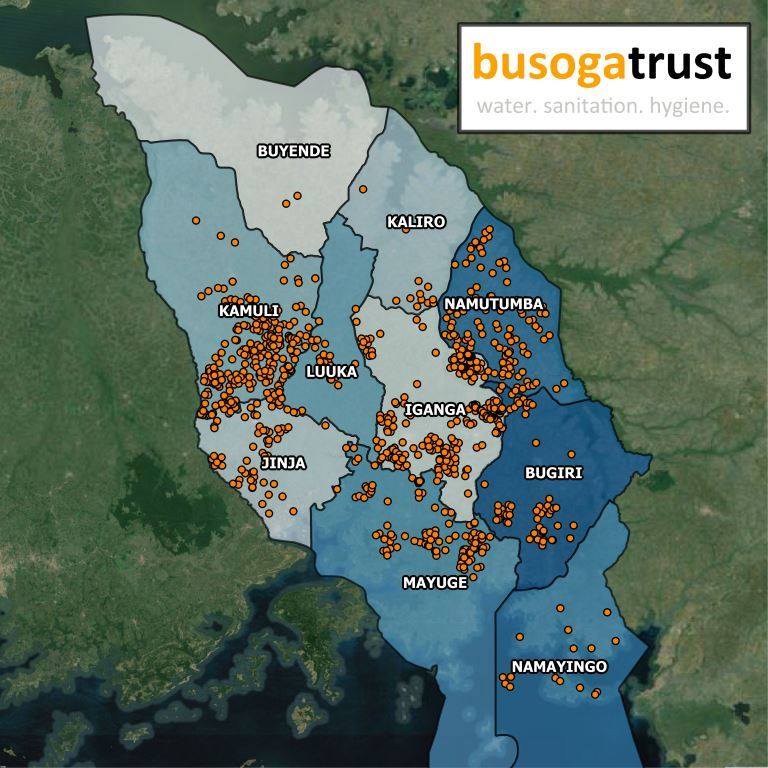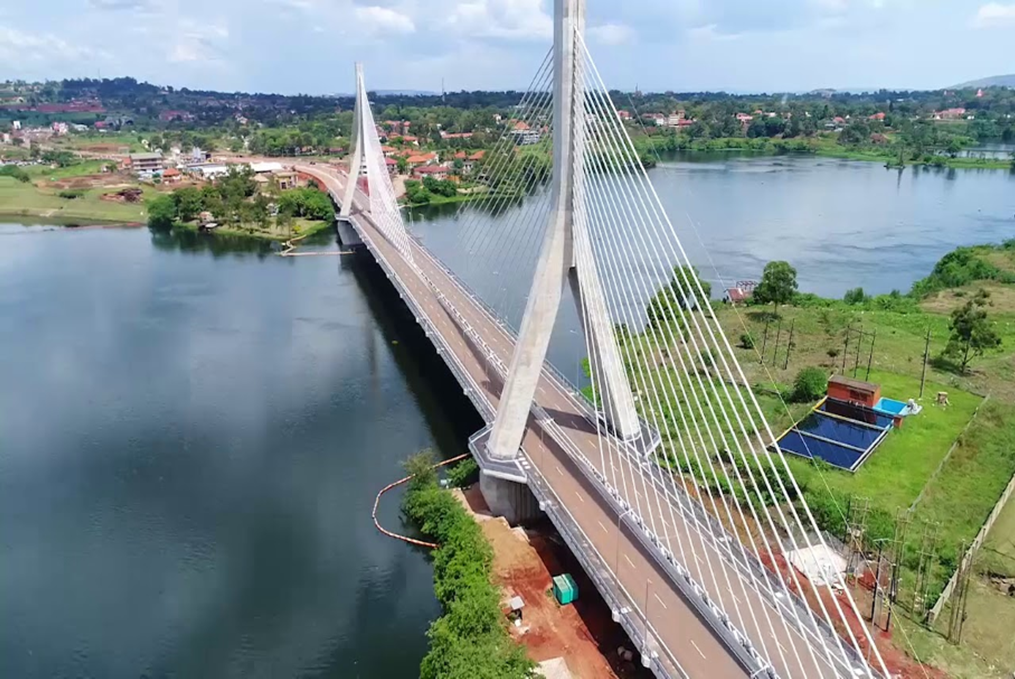Busoga sub-region is located in eastern Uganda with a total land mass measuring an estimated 10,000 square miles. The sub-region is uniquely bordered by natural water features, including Lake Kyoga to the north, Victoria Nile to the west, River Mpologoma to the east and Lake Victoria to the south. Busoga enjoys loamy fertile soils, an equatorial climate and leafy savannah vegetation influenced by these natural water bodies with an average rainfall of 60 inches (152 centimeters) a year.

This heavy rainfall produces a luxuriant growth of vegetation throughout the entire sub-region. The sub-region experiences two rainy seasons, from March to May for the first rains, and the second rains from September to November.
Administratively, the sub-region is divided into 1 city, 11 districts8, and the districts are further subdivided into 114 sub-counties and 648 parishes. Jinja is the capital city of Busoga The role of these Local Governments is to implement Government programmers at the respective levels. In addition, the sub-region has a total of four Municipalities9 and 11Town Councils.
Historically, Busoga has had ‘strong local administrative systems from the provincial level to the parish locally referred to as “Muluka”, ensuring effective supervision of economic activity by disciplining all those who were not productive’.10 2.2 A Historically United and Promising Busoga The Busoga sub-region has always had the development fundamentals with its economy nested around Jinja as an industrial consumer of the sub-region’s thriving agriculture.
The introduction of commercial cultivation of cotton in 1904 and, later on, coffee, transformed Jinja and the region’s economic fortunes. ‘Indian traders began building factories which were, in part, responsible for the construction of the Owen Falls Hydro-electric Dam in 1954 at Jinja’.11 Commercial agriculture in the sub-region, together with the completion of the Owen Falls Dam, transformed Jinja into East Africa’s largest industrial town, providing thousands of jobs, and indeed livelihoods, to the people in Busoga. ‘Major industrialists chose to locate themselves in Jinja to take advantage of its centrality, the presence of 3 freshwater bodies and the low electricity tariff’.
A post-independence Busoga immensely contributed to Uganda’s economy through agricultural and industrial productivity. ‘A vibrant manufacturing sector catalyzed by agricultural and energy productivity in the sub-region was 8 Jinja, Iganga, Kamuli, Luuka, Namutumba, Namayingo, Mayuge, Bugiri, Buyende, Kaliro and Bugweri Jinja, Iganga, Kamuli and Bugiri. Sejjeeka
Minerals for export, such as copper and cobalt mined in other parts of the country, were semi-processed in Jinja, thereby contributing to the country’s positive balance of trade. Jinja’s industrial base hosted an estimated 75 per cent of the country’s industrial establishment. Industries such as agro-processing, fish processing, wheat and oil, sugar manufacture and mineral processing constituted Jinja’s manufacturing sector.
Other industries included wood, soap making, mining and quarrying, leather processing, and construction, among others. Jinja’s industrial development thrived on the sub-region’s agricultural sector that produced a diversity of cash and food crops including cotton, coffee, ground nuts and sugarcane, among others. In 1954, the Busoga Growers Cooperative Union was started by farmers to bring together coffee producers and enhance productivity and collective bargaining. By the 1980s, membership of the cooperative union had grown to 320 primary societies that provided the much-needed agricultural finance as well as market for the sub-region’s agricultural production.
The Busoga cooperative model was initially successful because it supported small-scale farmers to overcome economic hardships and constitute themselves into a bigger group with collective skills in marketing and managing. ‘The cooperatives bought and sold in larger quantities, centralizing the dealings of farmers in the hands of those with greater commercial skills than most farmers themselves’.14 The cooperative movement in the sub-region went beyond the produce and market concept; the egalitarian membership principle of the Busoga Growers Cooperative Union ‘rendered the cooperative movement symbolic of a shared identity and interest to farmer-members as they faced [a] culturally distinct and the economically hostile outside world’.
This principle provided a unifying and incentive-based motivation to belong and ensured success of the cooperative movement in the sub-region. By 1986, the cooperative union owned 11 warehouses situated in each of the chiefdoms, four Lorries, six buildings in Jinja and livestock across the sub-region. The Busoga sub-region was constituted into a kingdom in 1906, becoming one of the five constitutionally recognized kingdoms in Uganda.
The Obwa Kyabazinga, as it is officially known, with the Kyabazinga as the titular head, has factually been a unifying factor, leading and mobilizing the people in Busoga for purposes of socio-economic development. In Uganda’s political history, the Basoga have played important roles in Uganda’s political formations. Wilberforce W. Nadiope Kadhumbula, the Kyabazinga of Busoga, played a prominent role in Uganda’s quest for independence, becoming the first Vice President of independent Uganda as well as Chairman of the Uganda People’s Congress (UPC). 2.3 Demography of Busoga Today Uganda’s population stands at 34.6 million, out of which 10.3 per cent is comprised of people from the Busoga sub-region.
Busoga sub-region has a total population of 3,583,200 (51.1% female and 48.9% males), representing 10.3 percent of the national population. Population growth rate is 2.9 per cent (against a national average of 3 per cent). The number of people per square kilometer (population density) is 397 against a national average of 173. With this high population density, coupled with an average household size of 5.1 persons, Busoga is fairly overcrowded.
Only 14 per cent of Busoga’s population lives in a classified urban centre. Jinja’s urbanization is at 36 per cent, making it the only town outside of Kampala and Wakiso that surpasses the national average, which stands at 21.3 per cent. Iganga follows at 18.4 per cent and Bugiri at 16.8 per cent. Overall, Busoga’s share of the country’s urban population is only 6 per cent.17
An analysis of the demographic characteristics points to the fact that Busoga is underperforming across several critical health indicators. At 6.1 children per woman, Busoga has the second highest fertility rate in the country, building up its high population growth, and consequently putting pressure on the available space and productive assets. At 379 persons per square kilometer, Busoga has the highest population density, which is responsible for overcrowding, which is a
For more information on the region refer to Busoga website : https://en.wikipedia.org/wiki/Busoga

